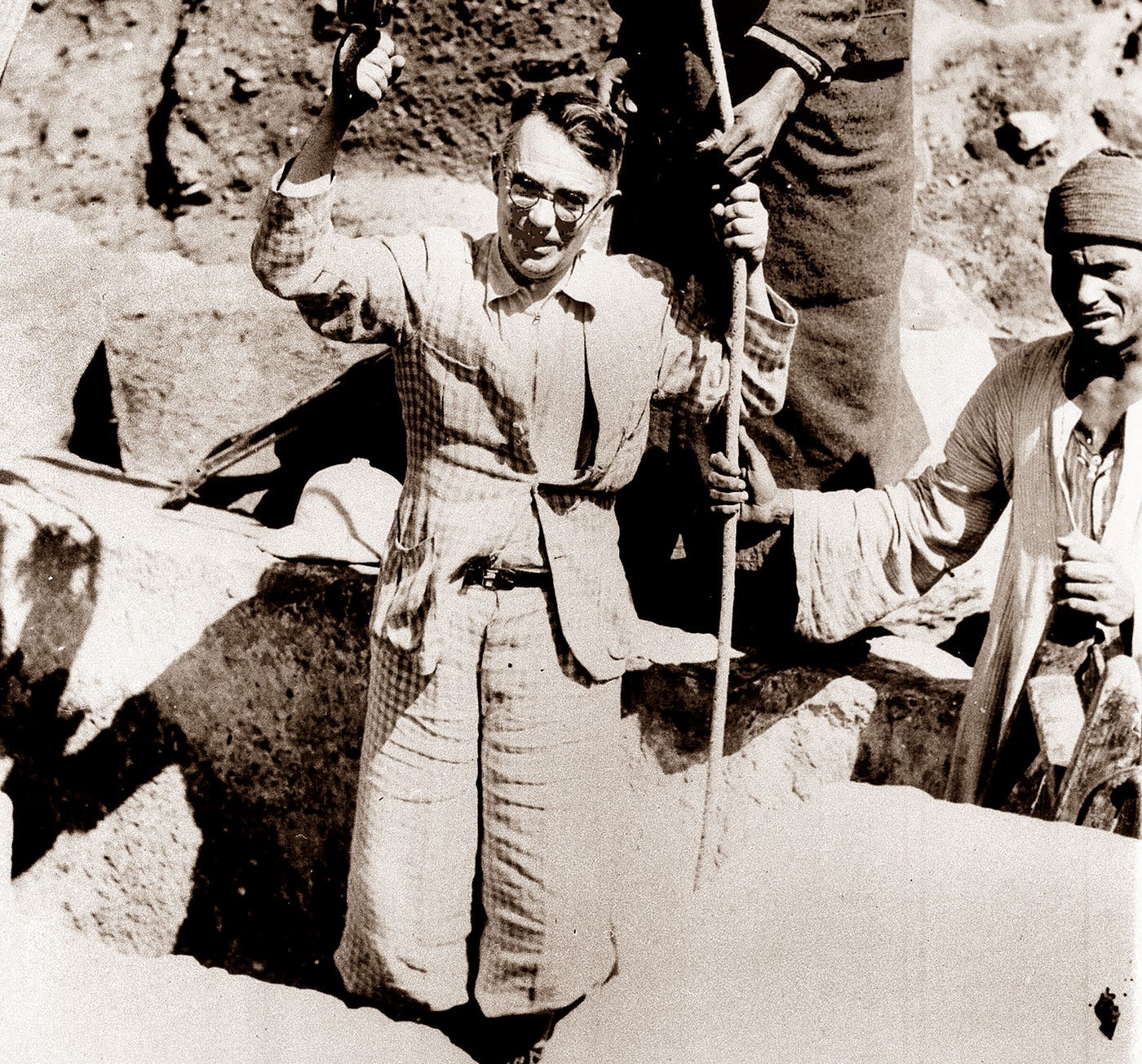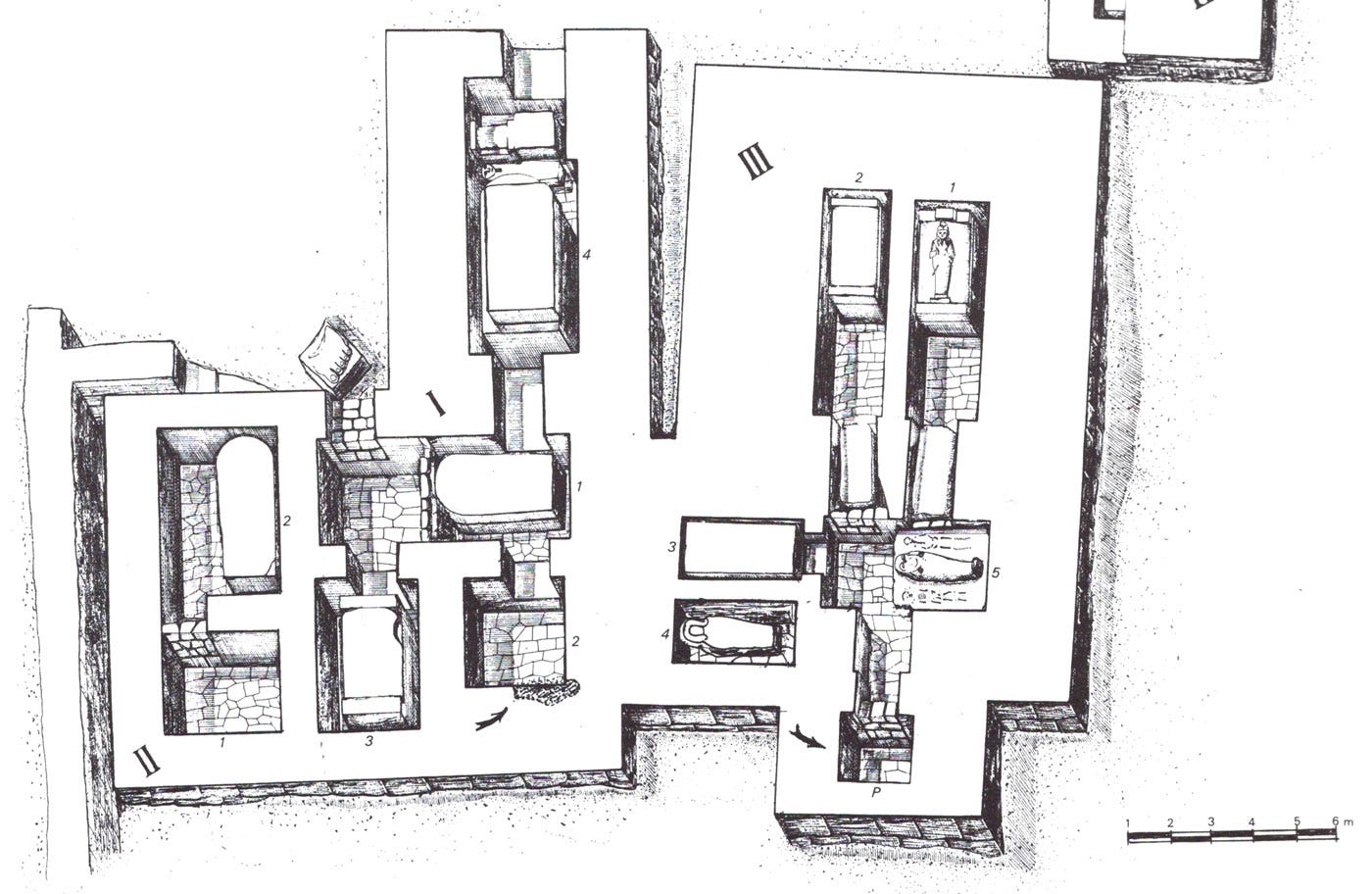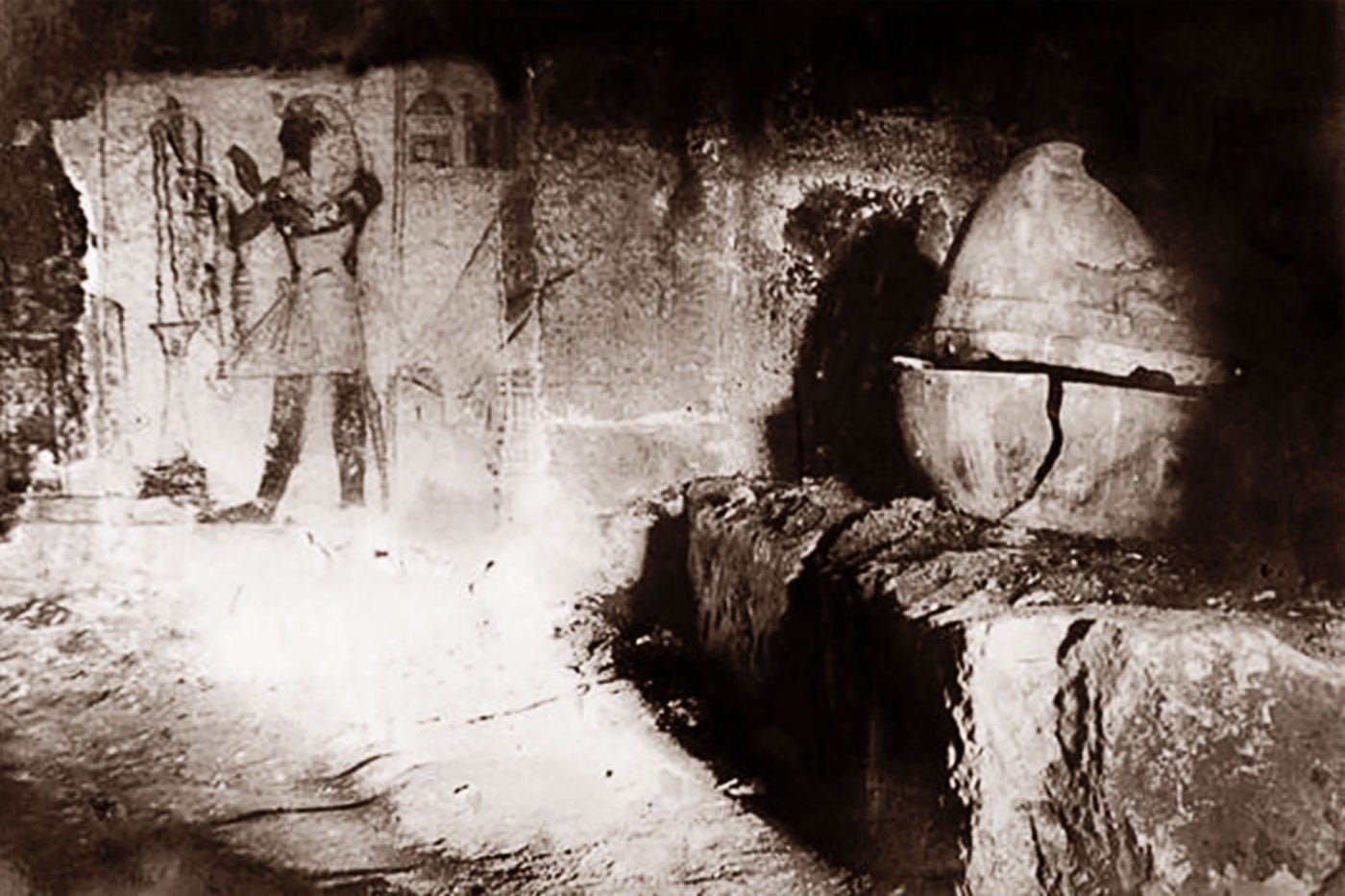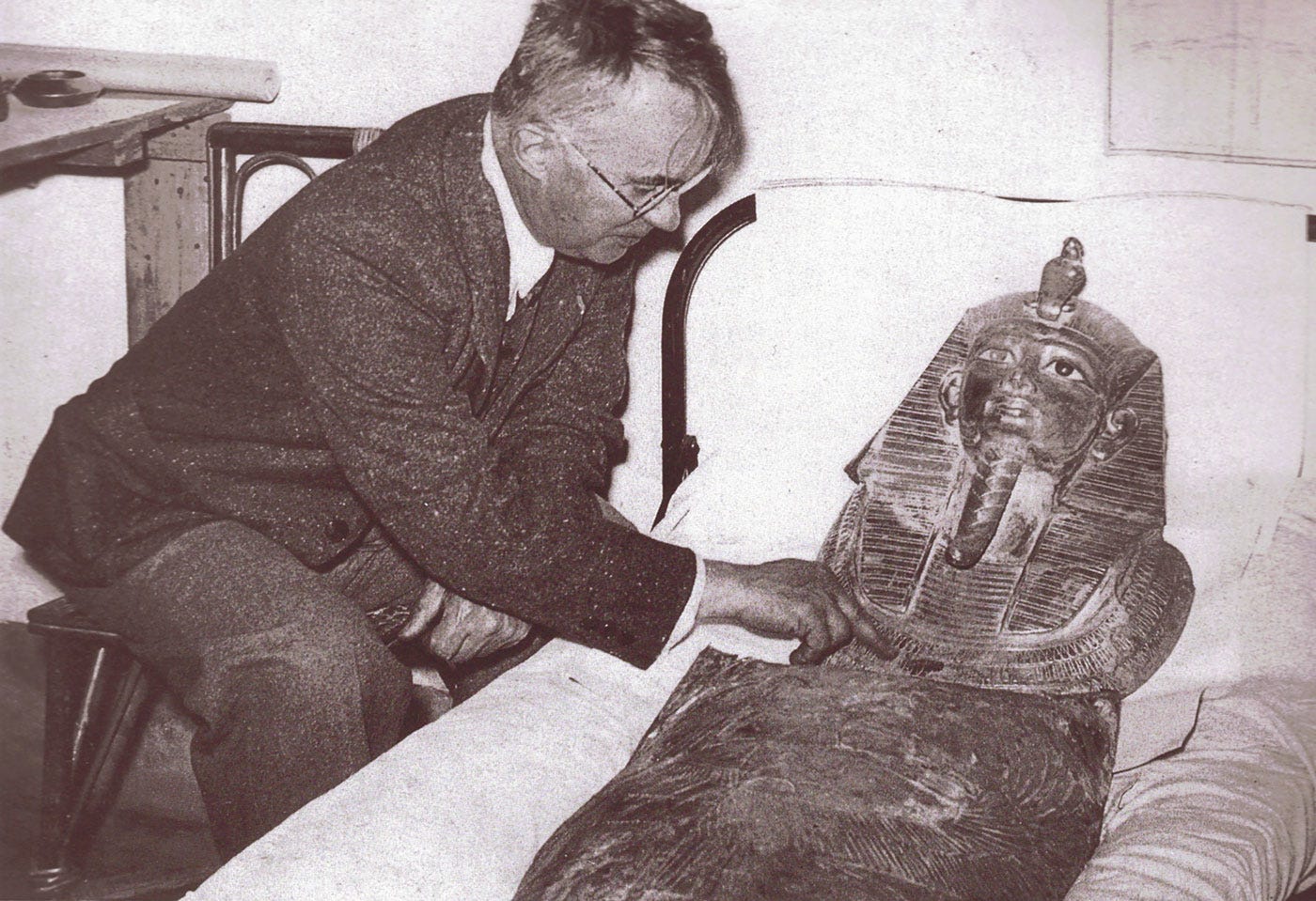The real Indiana Jones, Pierre Montet, discovered three intact Pharaohs tombs.
How come the discovery of the Treasure of Tanis remains largely unknown?
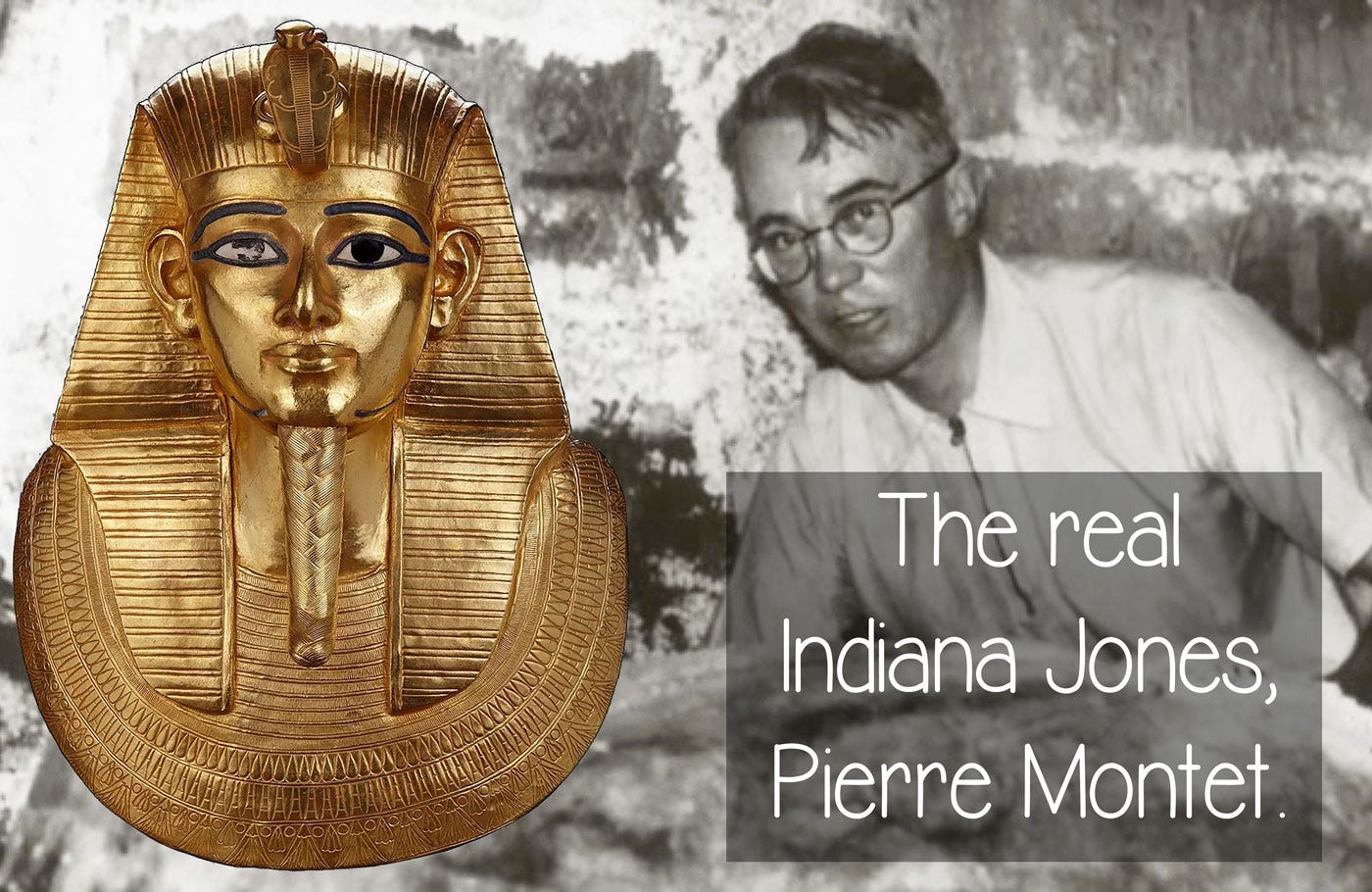
Dear reader, even if you have never had a chance to see Tutankhamun's gold mask, you know about it. Were you aware there is another solid gold Pharaoh's mask? Did you know of one of archaeology's most important discoveries: three intact Pharaohs' tombs filled with treasure?
This is not a secret; a selection from this treasure just toured the world and was seen by millions of visitors. Nearly six hundred gold and silver artifacts are in full view in Cairo's museum.
And the discovery of the Treasure of Tanis even inspired the creation of Indiana Jones.
Indiana Jones and the Raiders of the Lost Ark
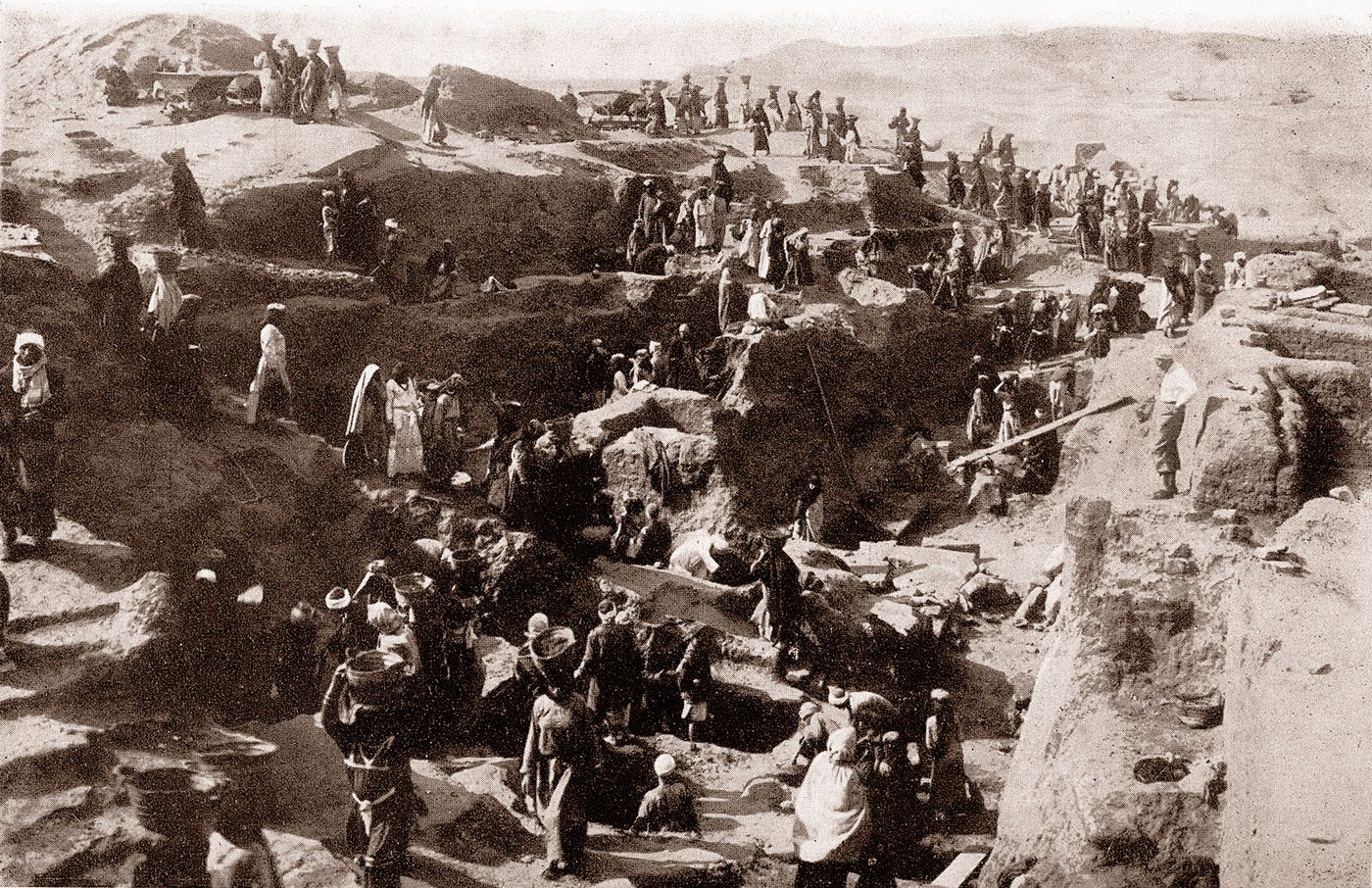
We are in 1936 at a prestigious American university. Archaeology professors discuss the location of the Ark of the Covenant.
Brody: However, an Egyptian Pharaoh...
Dr. Jones Jr: Shishak.
Brody: Yes, he invaded the city of Jerusalem around about 980 B.C., and he may have taken the Ark back to the city of Tanis and hidden it in a secret chamber called The Well of Souls.
However, about a year after the pharaoh had returned to Egypt, the city of Tanis was consumed by the desert in a sandstorm that lasted a whole year. Wiped clean by the wrath of God.
It is urgent to stop the Nazis from seizing the Ark, as "an army which carries the Ark before it is invincible." Dr. Jones grabs his fedora hat and bullwhip, becoming Indiana Jones.
At the same time that conversation takes place, an actual professor of Egyptology is digging in the very city where Indiana Jones hopes to find the Lost Ark, Tanis.
He does not know it yet, but underneath the ground are the intact tombs of three Pharaohs and a general, all covered with gold or silver. One of the Kings he is about to find is named Shoshenq, almost the same name as the Shishak Indy knew from the Bible:
When Shishak King of Egypt attacked Jerusalem, he carried off the treasures of the temple of the Lord and the treasures of the royal palace.
Do you start to see the link between Indiana Jones trying to stop Nazis taking the Lost Ark and Pierre Montet about to find intact Pharaohs’ tombs just as WW2 breaks out?
This is not Hollywood, but the true story of Pierre Montet and his discovery of the Treasure of Tanis.
Pierre Montet and the Tanis Treasure
Pharaonic Egypt lasted three millennia and had its ups and downs. Along the way, there were about 340 Kings. Hence, 340 Pharaohs’ tombs, all of which, it seems, were broken into.
In 1922, Howard Carter discovered the tomb of a teenage King. It had been looted, but what remained was astounding. The treasure and the tales of deadly curses made Tutankhamun famous.
A few years later, on the other side of Egypt, in the Delta, near the Mediterranean Sea, Pierre Montet and his team researched the site of Tanis. While Tutankhamun died a teenager, he ruled at a time when Egypt was immensely wealthy. Centuries later, the high priests of Luxor kicked Pharaoh off his throne.
As a result, Pharaohs had to make do with ruling the northern half of Egypt from Tanis. Between the economic collapse and the fact that they only ruled the North, these Kings have long been relegated to a footnote in Egypt's remarkable history.
Three thousand years later, Pierre Montet and his team dug Tanis, a confusing jumble of broken fragments that makes it difficult to imagine that it once was one of Egypt's major cities.
The fact that monuments were stolen from previous Pharaohs would suggest that this was, indeed, Egypt's decline.
But Pierre Montet was not a movie-set archaeologist but the real deal. It's 1939, and Montet has searched Tanis for over ten years. He and his team are digging inside the grounds of the temple of Amun.
Tanis, in the footsteps of tomb raiders
Montet's team started digging underneath mud-brick houses inside the temple. They found hardstone slabs, and the archaeologists wondered if they were the roof of something instead of the temple's floor.
Quickly, they found fragments of funerary objects with kings' names, proving beyond doubt that this was a Royal necropolis. Worryingly, there were also obvious signs of looting.
They were not the first to enter this underground hideout, as the first royal tomb they found was empty. Fortunately, the ancient plunderers were content with their loot and did not bother to search further. There was a lot more, only a few meters away—a lot.
March 1939, first intact Pharaoh’s tomb
Tutankhamun's tomb is tiny compared to other tombs in the Valley of the Kings. As the plan above shows, the tombs of Tanis are minuscule, barely larger than a sarcophagus.
Seventeen years after Carter's famous "wonderful things", the first thing Montet saw was:
A silver sarcophagus with a falcon's head attracted the eye. It appeared intact. Through a slot, one could see gold shining inside.
Pierre Montet and two colleagues had just discovered the solid silver, falcon-headed sarcophagus of an unknown Pharaoh named Shoshenq II.
Only three archaeologists were present, intentionally, for security reasons. Montet sealed the tomb and rushed to Cairo to inform the authorities and ask for protection.
Montet knew of the dangers of spreading the word 'treasure' like wildfire. Here is what he said:
I know from experience how the discovery of gold unleashes a kind of collective madness. The news spreads, somehow, with the speed of lightning.
The smallest particle of gold becomes, through the effect of imagination, a mountain of precious metal worth millions of pounds.
Like bees warned by a mysterious sense, people arrive from all sides.
This may be called gold fever.
The tomb was secured, but gold fever was not the only risk. The Second World War broke out.
February 1940, second intact Pharaoh's treasure, the tomb of Psusennes I
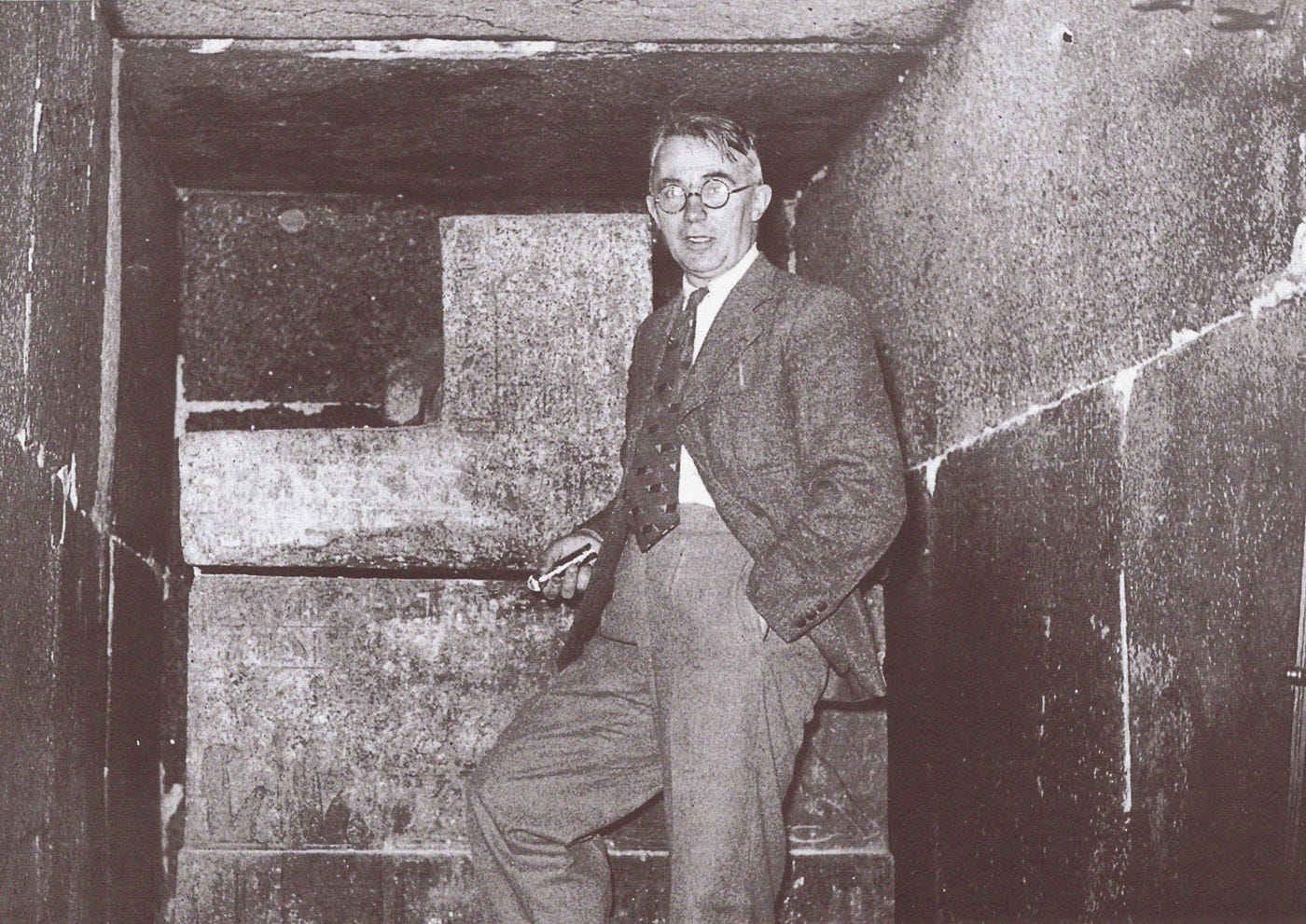
The only way to open the sarcophagus was to remove the stone slabs above. Inside was the most impressive find of ancient Egypt since Tutankhamun's.
A solid silver coffin, within which the Pharaoh was bedecked in precious metal. Gold mask, pectorals, and necklaces. One weighed 8 kg—18 lbs—, one gold bracelet nearly 2 kg —4 lbs—, and there were large lapis-lazuli necklaces.
With all that weight, one wonders whether he could move if he wore all his jewelry at once.
April 1940, third intact Pharaoh's treasure, the tomb of Amenemope
Pierre Montet and his team discovered a third intact Pharaoh's tomb, that of Amenemope. You probably never heard of him. Yet, he was still King of Egypt, reigned for about the same time as Tutankhamun—ten years—and, as the photo above illustrates, was covered in gold.
But now, the world was at war. No journalist banged on the archaeologist's door, eager to take pictures and invent stories of curses. With the horrors of war ongoing, there were more pressing matters than archaeological discoveries.
There was more to come, like the tomb of a general also bedecked in gold and jewels, but that would have to wait after the war.
In the meantime, the treasure was sent under army guard to Cairo's museum. At Tanis, bandits ransacked the archaeologist's storage. They chiseled Psusennes' tomb in an attempt to find treasures. Thankfully, they did not find the general's tomb, which was full of gold.
But thieves did manage to enter the museum.
Other bandits managed to open, inside the basement of Cairo's museum, a safe where curators safeguarded Psusennes's jewels, worried about bombings.
An energetic investigation found the majority of what was stolen. Several elements of the necklaces and a few small objects are missing.
In April 1945, before VE Day, Pierre Montet was already back in Tanis to pursue archaeological work.
How can the discovery of the Treasure of Tanis, three intact Pharaoh's treasures, still be unknown?
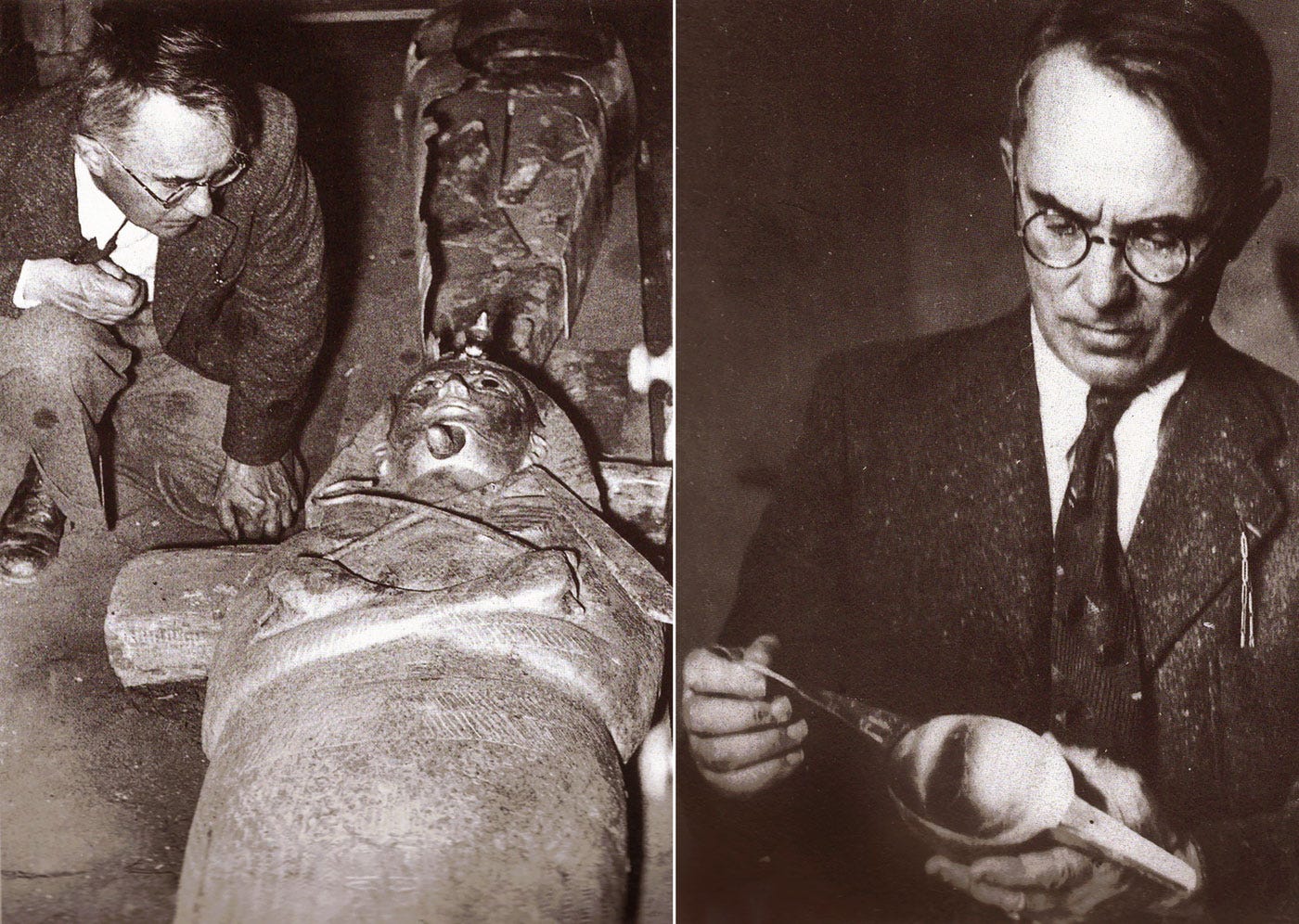
Dear reader, is it not tragic that such an important discovery is still overlooked?
I have seen people queueing to see Tutankhamun's treasure, glancing at the Treasure of Tanis—Psusennes's gold mask and solid silver sarcophagus—but they could not be bothered to walk a few steps to see it.
Because it is not famous.
You may think that journalists would know. Yet, when Thutmose II's tomb was recently discovered in the Valley of the Kings, the media breathlessly reported that it was the "First Pharaoh's tomb found in over 100 years."
What about Pierre Montet and the Treasure of Tanis? All it takes is to book a flight to Cairo, visit the old museum, or read a book or two.
As seen in this story, the names of Psusennes, Shoshenq II, Amenemope, or Treasure of Tanis do not deserve to be overlooked. They are not hidden in a dark basement.
Quite the opposite. They even traveled the world as part of the “Ramses and the Gold of the Pharaohs” exhibition, which was shown in San Francisco, Houston, Paris, Sydney, and Tokyo and visited by hundreds of thousands of visitors each time.
But because most people have never heard of Psusennes, Shoshenq, and Amenemope, the only way to attract visitors was to use a famous name: Ramses II.
I am far from the only one trying to explain how important the Treasure of Tanis is:
Had the Second World War not intervened, the royal burials of Tanis would have been as well, if not better, known that the tomb of Tutankhamun.
Salima Ikram.
Fascinating stories, regardless of whether the wonder is famous or not
This is why, dear reader, I will keep sharing fascinating but true stories.
It may be even more surprising to discover masterpieces you did not know existed and can be seen in person.
One day, hopefully, you can visit both Tutankhamun's tomb—beautiful but small and crowded—and Sethi I's tomb and see that the famous one is crowded, while the astonishing one is nearly empty.
Imagine the joy in experiencing a remarkable monument or artwork almost to yourself. All you have to do is take the time to wonder and venture beyond the notorious sites.
I trust, dear reader, that realizing that behind Indiana Jones hid a genuine archaeologist and a fascinating ancient treasure was a Moment of Wonder.
Sources
Pierre Montet – Tanis, douze années de fouilles dans une capitale oubliée du delta égyptien, 1942.
Pierre Montet – Les constructions et le tombeau de Psousennes à Tanis, 1951.
Georges Goyon – La Découverte des trésors de Tanis, aventures archéologiques en Égypte, 1987.
Pierre Montet's words were translated and adapted for this article by the author.
The Only Intact Egyptian Pharaohs’ Tombs Ever Discovered
The true story of the 'lost city' made famous by Indiana Jones
The Role of Pierre Montet in Egyptian Archeology.
First Pharaoh's tomb found in over 100 years.
https://archive.archaeology.org/0505/abstracts/tanis.html
Photos Archives Mission Montet.





